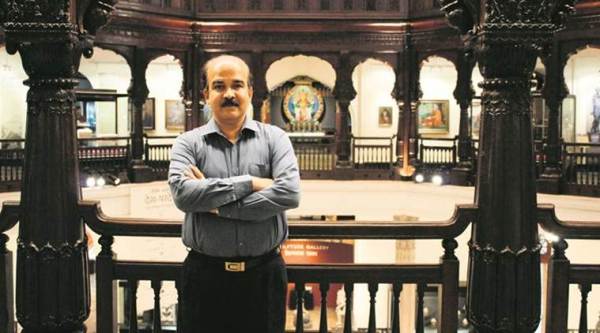Written by Pooja Pillai |Updated: January 11, 2019 12:31:00 am
‘Museums are not merely storehouses of cultural relics,’ says Sabyasachi Mukherjee
As it turns 97, Sabyasachi Mukherjee of Chhatrapati Shivaji Maharaj Vastu Sangrahalaya, talks about how Mumbai’s largest museum has stayed relevant

Mumbai’s Chhatrapati Shivaji Maharaj Vastu Sangrahalaya (CSMVS) turned 97 on January 10. In an interview, Director General Sabyasachi Mukherjee talks about lessons learned since he took charge in 2007 and the road map ahead. Excerpts:
What are the lessons you’ve learned about running a museum in Mumbai?
There were many factors responsible for today’s state of affairs which we needed to study about modern museum practice. The challenges necessitating this are increased competition from other global museums, technological advancement, impact of the internet, static art collections and other resources, government indifference, inadequate human resources, lack of human interest and awareness, inefficient processes, fast-growing urban life, cultural conflict and world politics. With these in mind, the museum had taken adequate measures in 2008 to transform all its galleries, and its basic approach towards museum practice. The most difficult lesson was to transform the staff.
What has been key to making CSMVS relevant to Mumbai?
We realised we had to modernise the museum — its display, maintenance, visitor facilities, education and security. The museum began its modernisation programmes 10 years ago with the idea to transform the museum from a national-level repository of antiquities to an institute of international standard. The main objectives were to make the museum visitor-friendly and also cater to a range of different visitor profiles, to create a clearer and better understanding of the collection and Indian arts in general, to strive towards high-quality educational programmes and outreach, to establish a state-of-the-art conservation studio for the preservation and conservation of its collection, to create a civic space for social debates and to initiate inter-cultural dialogue within different faiths. The modernisation plan has benefited almost a million people who visit this museum each year. It has also enhanced the image of the museum in India and the world.
Is the museum actively expanding its collections?
Our museum is perhaps one of the few museums in the country actively acquiring art. It purchases art objects from private collectors and licensed art dealers each year in consultation with experts and members of the art purchase committee. Besides antiquities, the museum also purchases contemporary miniatures, textiles, decorative art, contemporary crafts, and works in modern and tribal art forms. In 2016–17, the museum added 221 new exhibits to its collection, of which 205 were received as gifts. In 2017–18, the museum added 32 new exhibits to its collection received as gifts. Besides these, several display accessories were also purchased and received as gifts. Such accessories are important as they are useful to fill in the gaps in the narrative of various temporary and special exhibitions.






















No hay comentarios:
Publicar un comentario